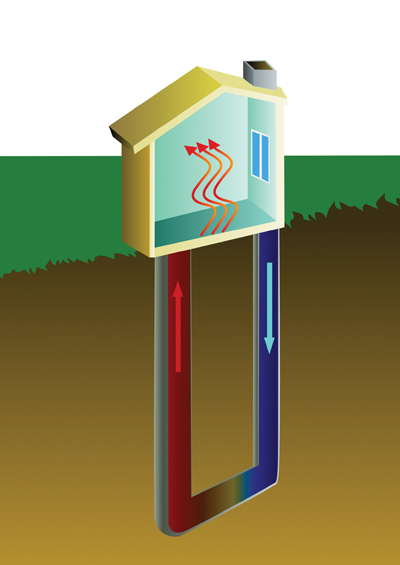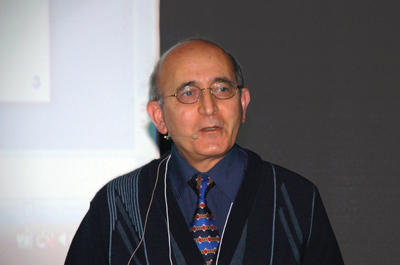
Where it’s accessible, geothermal energy is sustainable and has zero emissions
Geothermal energy makes sense for today’s greenhouses, says Dr. Mory Ghomshei of the University of British Columbia Institute of Mining Engineering.
 |
 |
| Dr. Mory Ghomshei says geothermal energy makes sense for today’s greenhouses. |
Speaking to greenhouse growers at the Pacific Agriculture Show, Ghomshei called geothermal energy a secure and sustainable source, noting it has zero emissions, which makes it cleaner and greener than peat, wood, coal, oil and even natural gas.
He noted Earth is a “hot” planet, meaning it contains a lot of stored heat. That heat energy can manifest itself in the form of volcanoes and earthquakes, or be drawn out more benignly as a source of usable energy. The way it can be drawn out is through water, and the amount of energy extracted depends on the temperature of that water.
ELECTRICITY REQUIRED FOR SYSTEM MORE THAN OFFSET BY EXTRACTED HEAT
“The concept behind a heat pump is to grab heat from a large source and compress it into a small source, thereby increasing its heat energy,” Ghomshei explained. A heat pump using water at just 11˚C (the temperature of most surface-level groundwater) flowing at a rate of only a gallon a minute can generate 1.5 kW of heat. Ghomshei stressed that the electricity it takes to power the system is more is more than offset by the heat that is generated.
“At 11˚, you need only one kW of electricity for 4 kW of heat.”
While growers can access 11˚ water with only a shallow well, Ghomshei urges growers to “dig deeper,” saying “if you drill down half a kilometre, you will get 50˚ heat.” Recognizing that may be cost-prohibitive for many growers, he recommends drilling 200-300 metres.
“The deeper you go, the more expensive it becomes but the more heat you can get,” he pointed out.
“If you go deep enough (70˚+), you can use a binary cycle power plant to produce both heat and electricity,” he said, adding there are over 100 areas in British Columbia where it is possible to get that much heat.
The electricity could then be used to power the system, the rest of the greenhouse or even sold to the power grid if enough is generated.
The most common way to extract geothermal energy is through a “closed loop” heat pump system using a single wellhead in a shallow well (10 to 25 metres). While Ghomshei diagrammed a possible closed loop system for greenhouses, he does not recommend it as it can only produce five to six kW of heat energy. That could be increased by stringing a series of closed loop wells together, but that would require additional space.
‘OPEN LOOP’ SYSTEM WOULD BE MORE EFFICIENT
More useful is an “open loop” system, which uses one well to extract hot water and another to discharge the cooled water. Wells should be placed so the water flows from the outflow well to the intake well.
Ghomshei’s recommended system (see diagram) includes a storage tank to provide additional hot water for peak usage or to store hot water generated during the day for use at night, allowing the system to be partially shut down at times. It also includes a way to draw heat from areas in the greenhouse that need to be chilled and move it to areas that need heat.
Geothermal heating is now mature technology, he said, and can be installed as a retrofit or in steps.
Ghomshei admits the relative viability of a geothermal system depends on the cost of natural gas, but he believes it even makes sense at today’s rates.
PAYBACK OF THREE TO FOUR YEARS FOR SOME PROJECTS
He presented data suggesting his system would provide net annual energy savings of $115,000 with a three-to-four year payback on the investment even at today’s electricity and natural gas rates. And if those rates go up, the savings could be even greater.
“Nobody knows what the cost of natural gas will be in five years, so geothermal energy is more secure.” ■
David Schmidt is a freelance writer and photographer in British Columbia.
Print this page